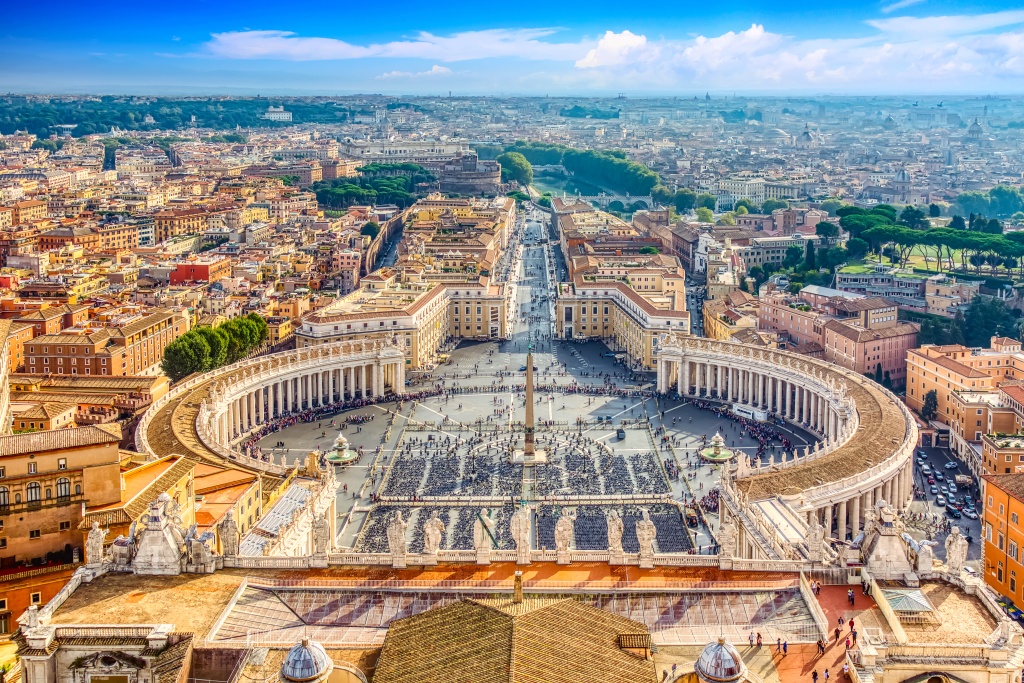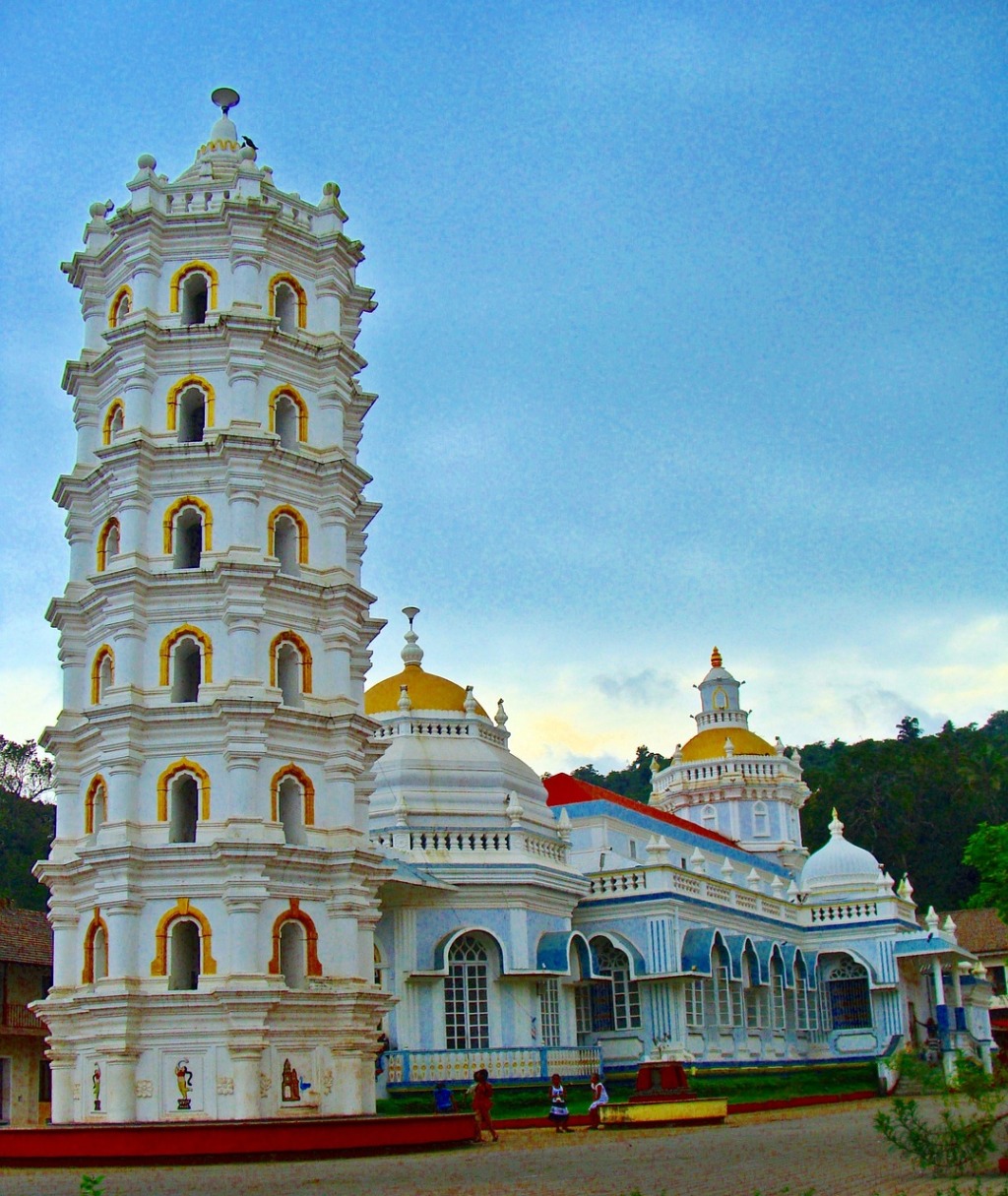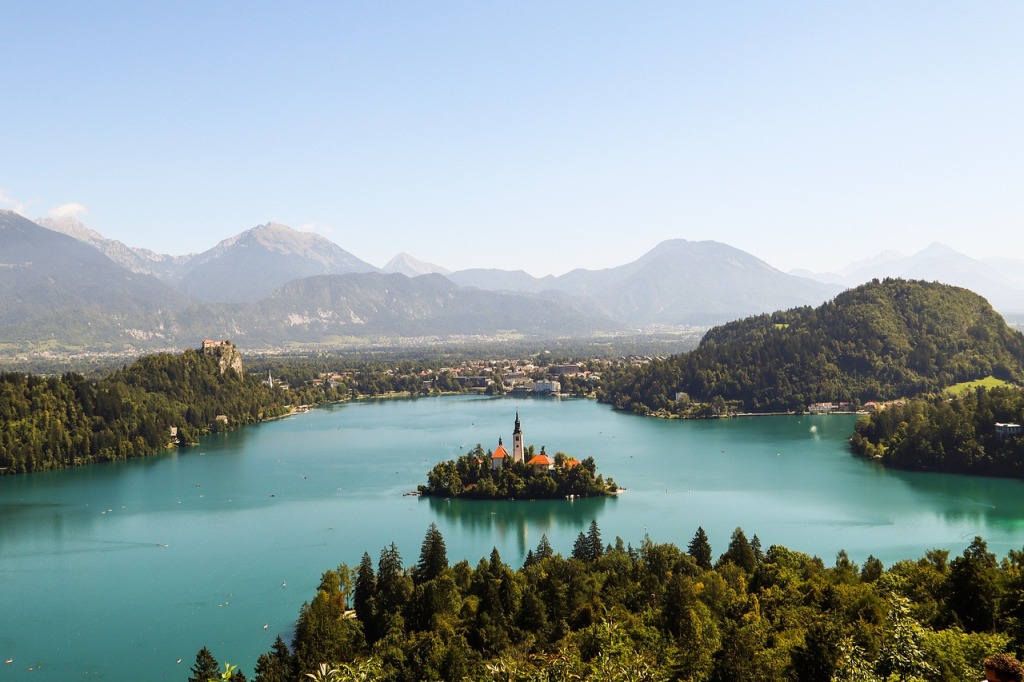This week’s podcast episode takes a visit to the smallest state in the world with the biggest reputation – Vatican City. Home to the Pope and some of the greatest art on the planet, this travel destination challenges and at times fills visitors with awe.
You can listen to the podcast here – but here’s everything you need to know about travelling to the Vatican City:

History
Early History: The history of Vatican City is closely intertwined with that of the Catholic Church. The area now occupied by Vatican City was once part of ancient Rome, and it is believed to have been inhabited since at least the 1st millennium BC. In ancient times, the Vatican Hill (known as Mons Vaticanus) was outside the city walls of Rome and was primarily used for agriculture.
Christianity and St. Peter’s Basilica: The origins of Vatican City as a religious centre can be traced back to the 4th century AD when the Roman Emperor Constantine legalised Christianity. According to tradition, St. Peter, one of the twelve apostles of Jesus Christ, was martyred and buried on Vatican Hill. The construction of the original St. Peter’s Basilica began over his burial site in the 4th century, marking the beginning of Vatican City’s association with the papacy.
Papal States: Throughout the Middle Ages and into the Renaissance, the Papal States, a territory governed by the Pope, included much of central Italy, including Rome and Vatican City. The Papal States served as both a religious and political entity, with the Pope holding temporal power as well as spiritual authority.
Unification of Italy: In the 19th century, the process of Italian unification led to the gradual annexation of the Papal States by the Kingdom of Italy. Rome, including Vatican City, was finally incorporated into the Kingdom of Italy in 1870, leading to the loss of temporal power by the Pope.
Lateran Treaty and Creation of Vatican City: The Lateran Treaty, signed in 1929 between the Holy See (the ecclesiastical jurisdiction of the Catholic Church) and the Kingdom of Italy, established Vatican City as an independent state. This treaty resolved the “Roman Question” and recognized the sovereignty of the Pope over Vatican City, ensuring the autonomy of the Catholic Church within its territory.

Modern History: Since its creation as an independent state, Vatican City has played a significant role in international diplomacy, religious affairs, and cultural heritage. It is the spiritual centre of the Catholic Church and the residence of the Pope, who serves as the head of the Church and the sovereign of Vatican City.
Throughout its history, Vatican City has witnessed numerous changes and developments, but its enduring significance as a symbol of Christianity and the papacy remains unchanged. Today, Vatican City attracts millions of visitors from around the world who come to explore its religious sites, museums, and cultural treasures.
Where To Stay
1. Hotels: While there are no hotels located directly within Vatican City due to its small size, there are numerous hotels in the surrounding area of Rome that offer accommodation options for visitors to the Vatican. These hotels range from budget-friendly to luxury, providing a variety of amenities and services to cater to different preferences and budgets.
2. Guesthouses and Bed & Breakfasts: In addition to hotels, there are guesthouses and bed & breakfast establishments located near Vatican City that offer accommodation options for travellers. These accommodations often provide a more intimate and personalised experience, with a focus on hospitality and comfort.
3. Vacation Rentals: Another option for accommodation near Vatican City is vacation rentals, such as apartments or holiday homes, which can be rented for short-term stays. These rentals offer the flexibility of having your own space and amenities, ideal for travellers looking for a home-away-from-home experience.
4. Hostels: For budget-conscious travellers, hostels are also available in the vicinity of Vatican City. These accommodations typically offer dormitory-style rooms with shared facilities, making them an affordable option for solo travellers or groups.
5. Religious Accommodation: Some religious institutions in Rome offer accommodation for pilgrims and visitors, including convents and monasteries. These accommodations often provide a unique and peaceful experience, with simple yet comfortable rooms and the opportunity for spiritual reflection.
It’s advisable to book accommodation in advance, especially during peak tourist seasons, to ensure availability and secure the best rates. Additionally, consider factors such as location, amenities, and reviews when choosing accommodation near Vatican City.
Where To Shop
1. Vatican Gift Shops: Within Vatican City, several gift shops offer a wide range of souvenirs, religious items, and Vatican-themed merchandise. These shops are located near major attractions such as St. Peter’s Square and the Vatican Museums, making them convenient stops for visitors looking to purchase memorabilia or gifts.
2. Vatican Museums Gift Shop: The Vatican Museums also have a gift shop where visitors can find a variety of art prints, books, replicas of famous artworks, and other museum-related items. This shop is located within the museum complex and can be visited during or after exploring the museum galleries.
3. Bookstores: There are bookstores within Vatican City that specialise in religious literature, including books on theology, spirituality, and the history of the Catholic Church. These bookstores offer a selection of titles in multiple languages and cater to scholars, pilgrims, and casual readers alike.
4. Artisanal Shops: In addition to souvenir shops, there are artisanal shops within Vatican City that sell handmade religious items and crafts created by local artisans. These shops offer unique and authentic pieces, including religious artwork, rosaries, and devotional objects.
5. Nearby Markets: While Vatican City itself is small and does not have traditional marketplaces, there are outdoor markets and street vendors in the surrounding area of Rome where visitors can shop for souvenirs, clothing, accessories, and local goods. Campo de’ Fiori and Piazza Navona are popular spots for shopping and browsing.
When shopping in Vatican City, be sure to check for authenticity and quality, especially when purchasing religious items or artwork. Additionally, keep in mind any customs regulations or restrictions on bringing certain items back to your home country.
Where To Eat and Drink
1. Restaurants/Cafés: There are several restaurants, cafés, and snack bars within Vatican City and the surrounding area where visitors can enjoy a meal or a snack. These establishments cater to tourists, pilgrims, and Vatican City residents alike.
2. Vatican Museums: Within the Vatican Museums complex, there are cafeterias and snack bars where visitors can grab a bite to eat while exploring the museum’s vast collections. These dining options offer a variety of refreshments and light meals.
3. St. Peter’s Square: There are also cafés and restaurants located in the vicinity of St. Peter’s Square, which is a popular gathering place for tourists and visitors to Vatican City.
4. Hotel Restaurants: There are hotels located near Vatican City that have restaurants offering a range of dining options, from Italian cuisine to international fare.
5. Picnicking: While there are restrictions on where you can eat within certain areas of Vatican City, picnicking is allowed in designated areas. Visitors can bring their own food and enjoy a meal in these designated spots.
It’s worth noting that while dining options are available within Vatican City, visitors should be respectful of the rules and customs of the Vatican, including dress codes and appropriate behaviour while on the premises.
What To See

Four places listed in the podcast as “must-sees” were:
- St. Peter’s Square: This is one of the largest and most beautiful squares in the world. It is located at the feet of St. Peter’s Basilica.
- St. Peter’s Basilica: St Peter’s Basilica is a phenomenal church located in Vatican City and is one of the most sought-after destinations in Rome.
Website: www.basilicasanpietro.va/it.html
- The Vatican Museums: The museums conserve the immense collection of art amassed by the popes from the seventeenth century onwards.
Website: www.museivaticani.va/content/museivaticani/it.html
- The Dome of St. Peter’s: Arguably one of the most interesting ways to experience St. Peter’s Dome is by climbing its 491 stairs to the top and seeing the remarkable view of Rome.




Leave a comment